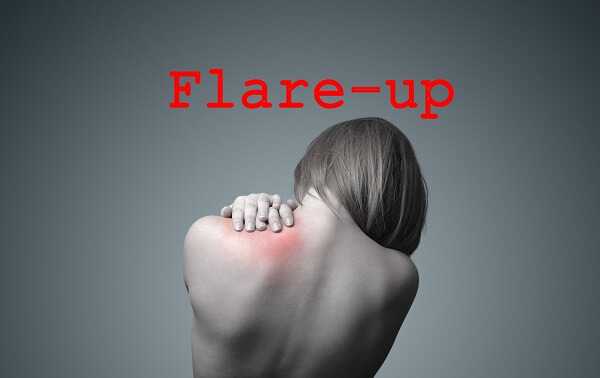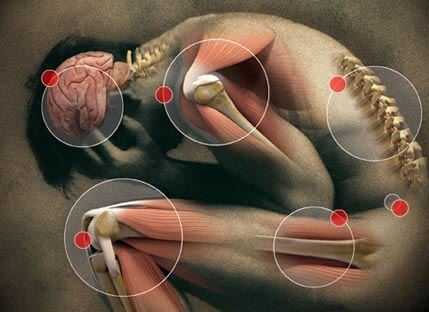Understanding Your Fibromyalgia Tender Points
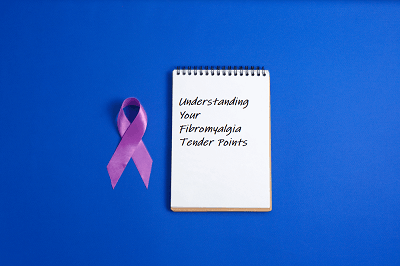
Fibromyalgia tender points are fierce, unrelenting, stubborn buggers that do their best to make your life miserable. Highly sensitive to light touch, depending on where you feel them the most, they can make life difficult when sitting, standing, sleeping, when you are being active or even remaining still. When you suffer terribly from Fibromyalgia tender points, it can feel as if every aspect of your life is affected by this painful, at times debilitating and frankly annoying condition.
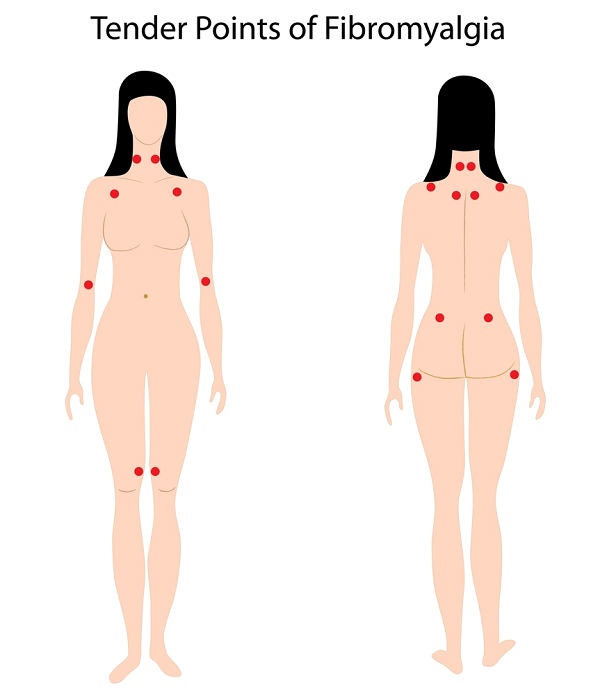
The good news is though, there are ways you can manage you them. However, the first step in tackling tender points in Fibromyalgia is actually being able to understand the difference between a Fibromyalgia tender point and a Fibromyalgia trigger point. If FMS wasn’t confusing enough, sometimes these two are referred to as the same, but they are actually quite different. And importantly the treatment for each is quite different too.
What Is The Difference Between A Tender & Trigger Point?
To begin with, tender points are painful unexplained sources of pain that are found in specific places all over the body. Usually they are not deep areas of pain, but rather occur just under the surface of the skin, and are most commonly found around joints but not the joint themselves.
Fibromyalgia can feel like an ache all over, but specifically Fibromyalgia tender points present extreme and long lasting pain at each distinct point, when merely pressed by a finger.
Fibromyalgia trigger points are different all together. Unlike the superficial pain of a tender point, a trigger point doesn’t necessarily feel painful to touch. Instead it is a muscle knot that creates deep muscle pains, aches and often referred pain to other areas of the body. They are also hard to touch, and can feel like a dense lump or similar to a marble or pebble under the skin.
Although tender points are most commonly found in Fibromyalgia, you don’t have to have Fibro to suffer from trigger points. People who do have Fibromyalgia though, often suffer from multiple trigger points because they are a common symptom of Fibromyalgia and are a sign of an unhealthy musculoskeletal system.
For this reason both trigger points and tender points are used to diagnose FMS.
Where Do They Most Commonly Occur?
The most common tender/trigger points in Fibromyalgia consist of the 18 corresponding pain points that have traditionally been used to diagnose FMS with what is known as the Fibromyalgia tender point count check.
These specific corresponding tender point areas include:
- Clusters around the neck
- Shoulders
- Elbows
- Upper Back
- Lower Back
- Hips
- Buttocks
- Knees
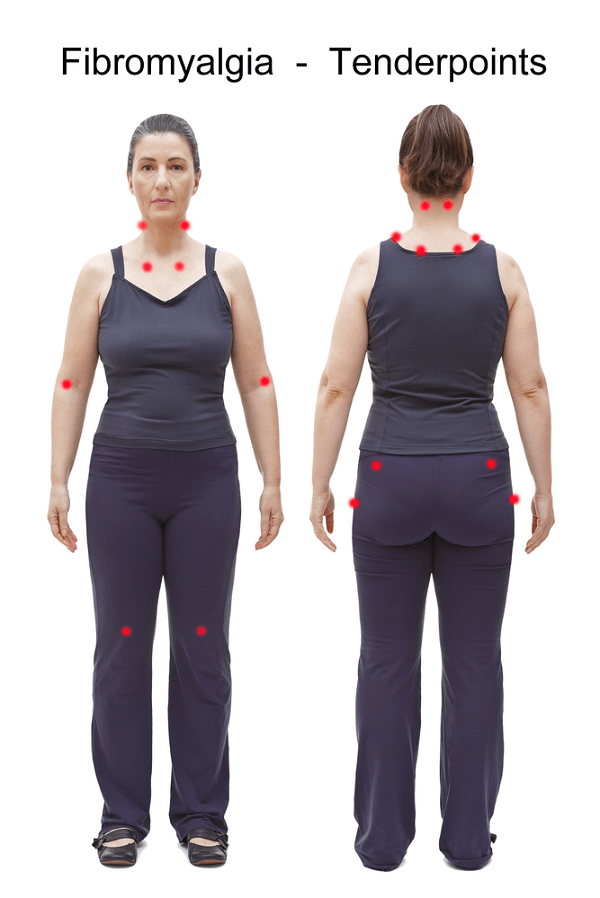
However, if you suffer from Fibromyalgia, you will know yourself that there can much more than 18 pain points on your body and they don’t all necessarily feel the same. And that’s because some are actually tender points, and others are trigger points.
Discovering Some Of Your Tender Points Are Actually Trigger Points
Once you understand the difference between trigger and Fibromyalgia tender points, you will likely be able to feel around the areas of your body that are sore and be able to differentiate between the two. Remembering that:
Tender Points = soft tissue that causes acute superficial pain to light touch.
Trigger Points = firm lumps or knots of muscles that when pressed may cause pain at the source, but do cause pain to other areas of the body.
What Are Some Other Characteristics of Tender Points?
As Fibromyalgia tender points and trigger points are so often referred to as one in the same. Some of their combined sensations and symptoms can feel like:
- Intense burning & or tingling
- All over ache
- Bruising
- Stiffness
- Fatigue

For a full comprehensive list of the symptoms of Fibromyalgia Click Here
How Do You Specifically Treat Tender Points?
Treating Fibromyalgia as a whole involves a comprehensive pain management program. But treatments specific to tender points Fibromyalgia can include:
Light Massage: Tender Point pain can respond well to light massage when done by an experienced masseuse. Tender points are commonly cold to touch, and a good masseuse will gently work heat in to the area improving circulation and freeing up muscle restrictions.
Light Exercise: Light exercise can also improve pain levels. Anything that gets you moving actually helps to repair old muscle tissue and replace it with new and stronger tissues. This means better overall muscular support and less Fibromyalgia tender point pain.
Hot & Cold Packs: If your tender points feel cold to touch, the heat from a hot pack can help to soothe the pain and gently relax the muscles and tendons around the affected areas. Similarly if they feel more like a burning or tingling sensation, a cold pack will help to draw some of the heat out of the muscle and numb the pain.
Analgesics: Analgesics are painkillers. They range from over the counter products to prescription medicines.
Analgesics: Analgesics are painkillers. They range from over the counter products to prescription medicines.
Find Out How You Can Better Treat & Manage Your Tender Points With
But it is possible. With the right diet and exercise and regular treatments for Fibromyalgia, tender point pain can improve.
Facebook
Google+
Twitter
Pinterest
Reddit
StumbleUpon



